Adblocker Detected

We always struggled to serve you with the best online calculations, thus, there's a humble request to either disable the AD blocker or go with premium plans to use the AD-Free version for calculators.
Disable your Adblocker and refresh your web page 😊
Table of Content
The concrete calculator is developed for estimating and planning concrete-related projects including (slabs, walls, columns, footings, stairs, and curbs).
The calculator provides an accurate measurements, considering factors such as length, width, depth, and quantity. Also enter the price to calculate the total volume and cost of materials when you enter the price per cubic foot, price per cubic yard, or price per cubic meter.
“The concrete is the special construction material that is prepared by composing of a mixture of cement, water, and aggregates such as sand, gravel, or crushed stone”
When the water and cement mix, they form a paste that coats the surface of the aggregates and binds them together into a solid, durable mass.
Let us take you through the formulas of the concrete volume required for constructing various structures.
.png)
$$ Volume\left(ft^{3}\right) = Height * Length * Width $$
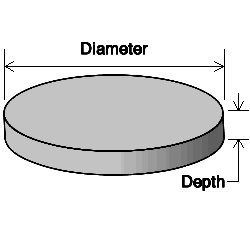
$$ Area\left(ft^{2}\right) = \pi * \left(\frac{Diameter}{2}\right)^{2} $$
$$ Volume\left(ft^{3}\right) = Depth * Area $$
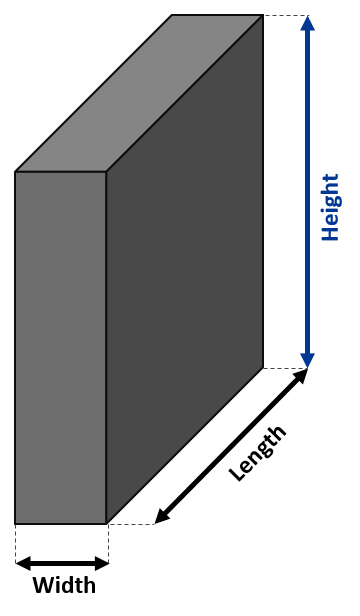
$$ Volume\left(ft^{3}\right) = Height * Length * Width $$
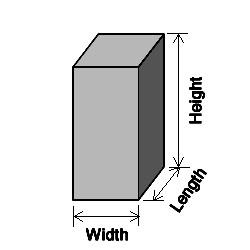
$$ Volume\left(ft^{3}\right) = Height * Length * Width $$
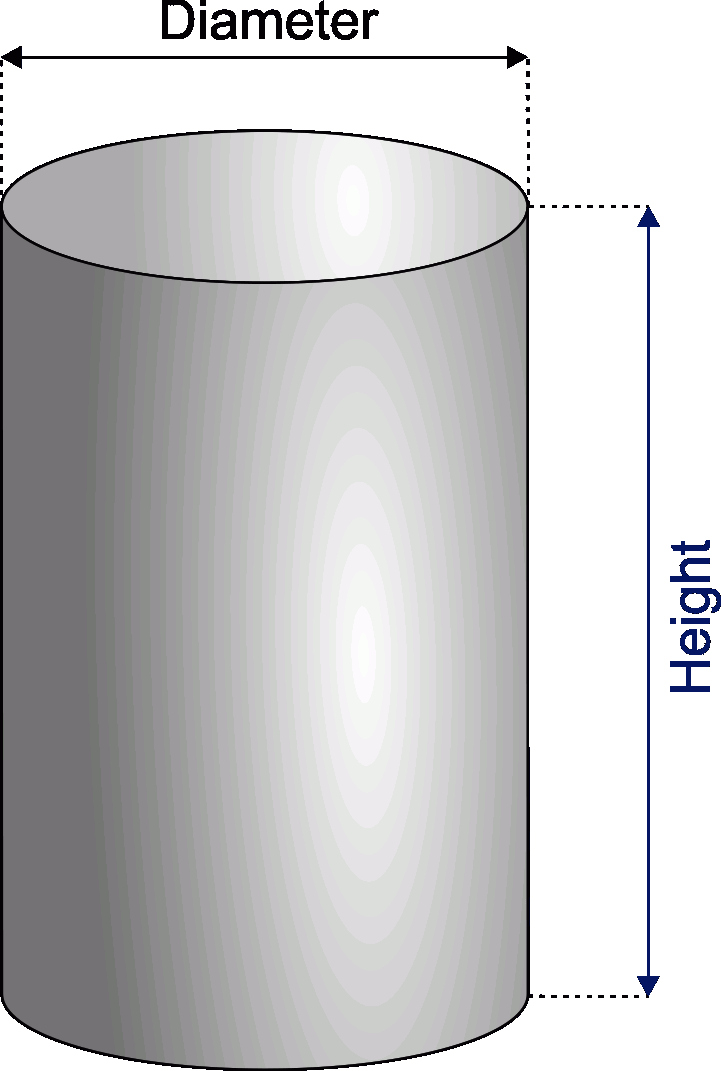
$$ Area\left(ft^{2}\right) = \pi * \left(\frac{Diameter}{2}\right)^{2} $$
$$ Volume\left(ft^{3}\right) = Height * Area $$
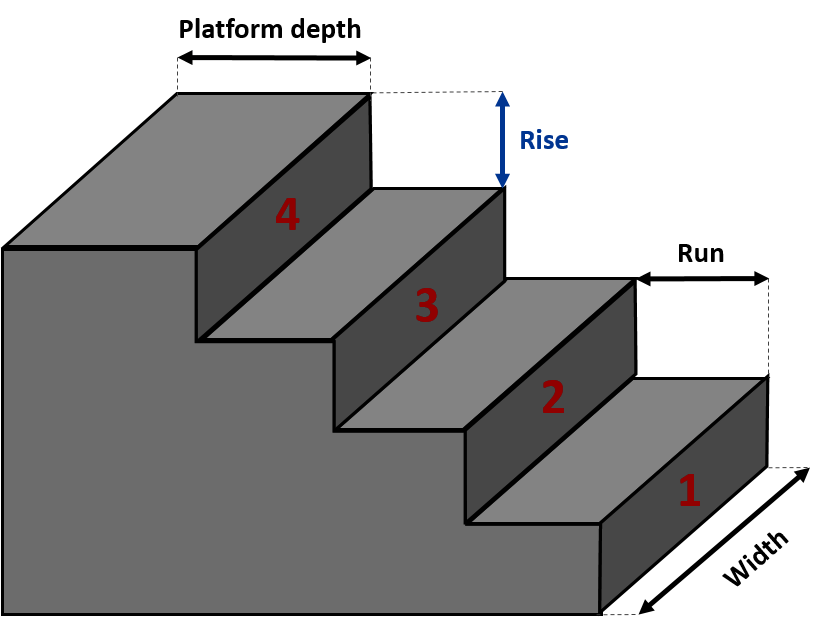
Keep in mind that:
$$ \text{Volume Under Platform} \left(ft^{3}\right) = Width * \text{Platform Depth} * \left(\text{Rise Height} * \text{No. Of Steps}\right) $$
Now ignoring the platform, we will only focus on the steps. In the picture above, we have four steps.
Now we have:
$$ \text{Volume Under Each Step}\left(ft^{3}\right) = \text{Run Depth} * Width * \left(\text{Rise Height} * \text{Step Number}\right) $$
$$ \text{Total Volume} \left(ft^{3}\right) = \text{Volume Under Platform} \left(ft^{3}\right) + \text{Volume Under Each Step} $$
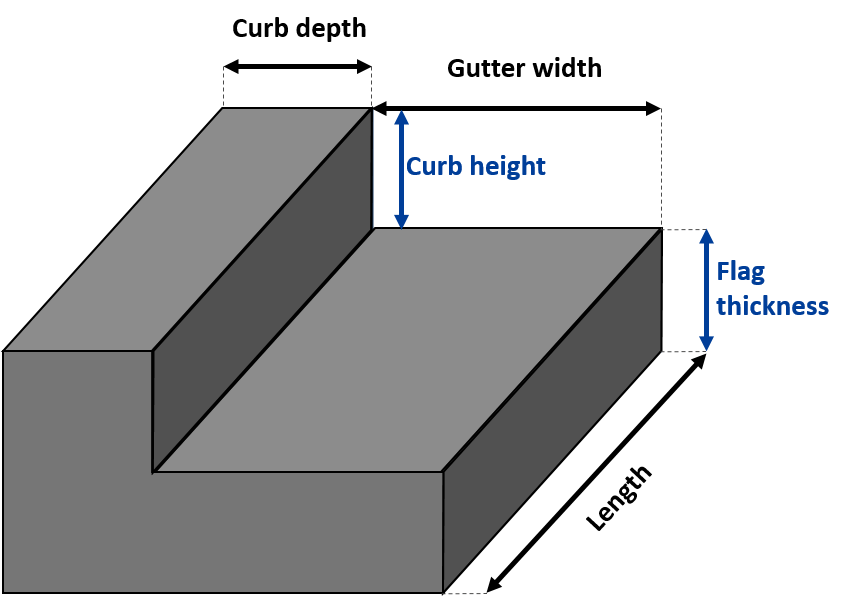
Here we will again determine the volume of the concrete from the bottom step to the top one. We have two sections here that are curb and gutter, respectively.
$$ \text{Volume Under Curb} \left(ft^{3}\right) = \text{Curb Depth} * Length * \left(\text{Curb Height} + \text{Flag Thick\ckness}\right) $$
$$ \text{Volume Under Gutter} \left(ft^{3}\right) = \text{Gutter Width} * Length * \text{Flag Thickness} $$
$$ \text{Total Volume} \left(ft^{3}\right) = \text{Volume Under Curb} \left(ft^{3}\right) + \text{Volume Under Gutter} \left(ft^{3}\right) $$
Let us have a look of the following types of the concrete below along with their densities:
| Type | Density (kg/m³) |
| Ordinary | 2400 |
| Light Weight | <1920 |
| High Density | 3000-4000 |
| Reinforced | 2500 |
| Precast | 2400 |
| Prestressed | 2330 |
| Air-Entrained | 2535 |
| Glass | 2620 |
| Rapid Hardening | 2250 |
| Asphalt | 1950 |
| Lime | 2080 |
| Roller Contracted | 2400 |
What about if we resolve an example here? Yes, we are going to do so that you understand what we are discussing exactly. Let us go!
A contractor has started a project in which about 5000 concrete circular slabs are needed. The diameter of the slab is about 2ft and expected depth is about 5 inches. How to figure concrete required to make 5000 circular slabs?
$$ Area\left(ft^{2}\right) = \pi * \left(\frac{Diameter}{2}\right)^{2} $$
$$ Area\left(ft^{2}\right) = 3.14 * \left(\frac{2}{2}\right)^{2} $$
$$ Area\left(ft^{2}\right) = 3.14ft^{2} $$
$$ Volume\left(ft^{3}\right) = Depth * Area $$
$$ Volume\left(ft^{3}\right) = 5 * 3.14 $$
$$ Volume\left(ft^{3}\right) = 15.14ft^{3} $$